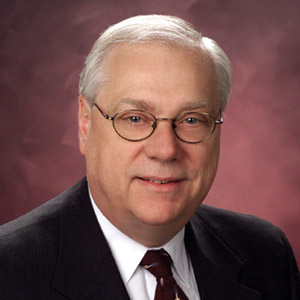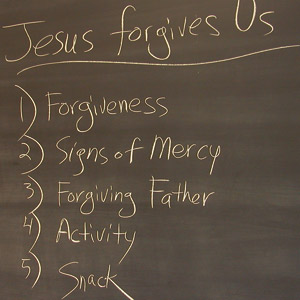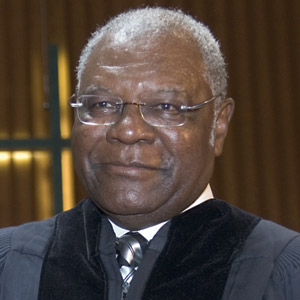 |
| Daniel O. Aleshire |
Daniel O. Aleshire has been executive director of the Association of Theological Schools in the United States and Canada since 1998. From 1990 to 1996 he served as the organization’s associate director for accreditation, and from 1996 to 1998 he was associate executive director.
During Aleshire’s tenure at ATS, he oversaw the adoption and implementation of new accrediting standards. On the 10th anniversary of the adoption of the new standards, In Trust‘s editor, Jay Blossom, asked him about how the standards were adopted, how they have been adjusted over the last decade, and what changes to expect in the near future.
What led to the accreditation standards being changed 10 years ago?
By the early ’90s there were three issues:
The standards had last been comprehensively changed in the late 1970s or early ’80s. They had been amended from time to time since then, and as a result there was a growing internal inconsistency.
The [pre-1996] standards reflected a much more homogeneous era of theological education. They had a more mainline, residential, theological-school center to them. Increasingly, as other kinds of schools came into the Association of Theological Schools in the ’70s and ’80s (particularly Roman Catholic and evangelical Protestant schools), the standards required them to squeeze their way into the implied center of the standards.
Because the standards reflected a very homogeneous pattern of theological education, the standards assumed a lot. Some of them were almost cryptic in their wording because a homogeneous group of schools had common understandings that the standards didn’t need to define or articulate.
Can you explain that further?
For example, the standards had a relatively simple statement about governance. They didn’t identify the range of governance structures that were already evident in the schools. If you look at the current standard on governance, it articulates how governance structures vary among freestanding schools, diocesan schools, and university divinity schools and college-related seminaries. The governance standard changed from a few lines to three pages. Much of the new text spells out certain assumptions that were behind the old standard but weren’t stated in print.
Was there a hope that more nonaccredited schools might be brought in? Or was there pressure from already-accredited schools to make the standards reflect their real experience?
I think that it was more the second group. Increasingly different patterns of theological education were contorting themselves to look like they adhered to the standards when, in fact, they were expressing theological education in ways never envisioned in the older standards. That was true with distance education and extension education in particular. But it was also present in how residency is understood — as participation in class and chapel and events at the school rather than living in seminary-owned housing.
What was the rewriting process like?
It was a four-year process. We spent the first two years identifying the characteristics of good theological education, and then we spent the next two years developing accrediting standards that would reflect that understanding of the varieties of good theological education. It involved all of the 1994 ATS Biennial Meeting, including work groups using all the participants, to develop framework statements of what good theological education might look like. During the next two years, we had several different committees writing sections of standards on the basis of the framework standards. We circulated three complete sets of texts to member schools and had regional meetings between the second and third editions of the texts where we gathered public comments that became the primary basis for the shift from the second to the third.
What was unique was that, rather than just sitting down and revising the standards, we used the occasion to ask what the many forms of good theological education look like, and how accrediting standards can support that understanding of good theological education.
In the first accrediting visits after these new standards were adopted, were the schools adequately prepared?
For the first two years after the new standards were adopted, schools had the option of being reviewed by the old standards or the new ones.
Since many schools are reviewed only every ten years, the last of the schools reviewed by the old standards are just now being reviewed for the first time on the basis of the 1996 standards.
It’s been a decade of implementation. When the new standards were adopted, all the presidents and deans and chairs of boards didn’t immediately read the standards and begin needed institutional changes based on them. Standards don’t work that way. Schools consult when they want to make an institutional change that they think will have accrediting significance, or when they’re getting ready to develop a new program or a new campus or an extension site, or preparing for a comprehensive accreditation review. At the conclusion of the decade, I think that it is fair to say that the new standards have provided a comprehensive, normative framework for thinking about theological education and that they have been effective in their use with the schools.
Why should boards pay attention to accreditation standards?
If trustees themselves don’t pay attention to whether the governing board is attending to the accrediting expectations for governance, no one will force them to do that. The president needs to prompt the board, of course, but the governing board is itself responsible for the work of the governing board. In the last 15 years, we’ve had two or three schools that were placed on probation because there was a fundamental failure in governance — and these governance problems could have been identified by looking at the accrediting standard on governance.
How should the board help the administration as it prepares for a visit?
Typically governing boards are involved in the self-study process. Typically there will be a representative from the board on some self-study committees — certainly on the committee on governance. The Commission on Accrediting expects that the self-study will be submitted as an institutional document, and most schools require the board to approve it as a fair and accurate analysis of where the school is at that particular time. In every accrediting visit, the visiting committee will have a conversation with a group of board members. It is a required conversation for every comprehensive visit.
Do board members need to be reminded that self-studies and accrediting visits require a lot of work? It’s more work than people who haven’t gone through this (like new board members) will expect.
That’s right. Boards should understand that there are periods when the institution should focus attention on its institutional analysis — and that’s good for the school. The self-study process and the work leading into a comprehensive review do require a lot of institutional effort, and boards should be aware of that effort. I think that most boards are aware, but sometimes they’re not equally aware of the potential benefit. They wonder if unnecessary work is being done on an audit-like activity that won’t lead to any real institutional benefit other than getting the school’s academic license renewed.
What are the benefits?
Accreditation is deeply anchored in institutional self-evaluation that is then submitted for peer review. The best accrediting visits happen when a school says, “We’ve looked hard and honestly at ourselves. We have already begun working to change this, this, this, and this.” I’ve heard schools say the self-study process was sufficiently helpful that the accrediting visit was anticlimactic — “We’ve gotten our good out of this, because it’s created the venue in which constituencies have talked to each other, looked in the closet and pulled out stuff that ought to have been dealt with a long time ago.” When the self-study is integrated into a school’s own institutional planning, the study gives the school a template to move forward in its work. I think that’s what the benefit is. If it’s done well, it makes better schools.
Are there any plans to change the standards again?
Following 1996, ATS implemented an ongoing review of the standards. Every two years, we have taken a close look at two or three standards to see if changes need to be made, and then we have looked at the implications of a possible change for all of the other standards. Since ’96, there has been a fairly comprehensively changed standard on distance and extension education.
The Board of Commissioners is going to make a recommendation at the June 2006 meeting about a slight change in the Ph.D. standard. In 2004 we made a slight change in the D.Min. standard. ATS asks evaluation committee members to evaluate how well the standards served the committee’s work, and asks deans, presidents, and self-study chairs of schools visited how they think the standards functioned in the course of the self-study. We do this kind of evaluation on an ongoing basis, so we monitor signals to see if the standards are functioning properly. At this point, we’re not proposing a large-scale redevelopment like the standards adopted in ’96.
Looking at current trends in theological education, are there things happening now that will need new standards in the future?
Theological schools, like the rest of higher education, appear to be using more and more adjunct faculty. I think the current accrediting standard on faculty still assumes that the dominant faculty presence is a full-time faculty supplemented by some adjuncts. Ten years from now, there could be several ATS schools that are far more dependent on adjunct faculty in core areas. We would have to address that in the standards.
As distance-learning models continue to develop, the way we have dealt with distance learning in the standards is not likely to hold up for another 10 years. I would be surprised if it does. One of the shifts that the 1996 standards made possible was that schools could demonstrate their accreditability in terms of access to resources rather than ownership of resources.
You’re talking about library resources or technology?
Take library resources. A school like Baptist Theological Seminary at Richmond [in Virginia], across the street from Union Theological Seminary and Presbyterian School of Christian Education, has been accredited, in part, on the basis of its contracted access to the library resources at Union-PSCE. Before 1996 it would have been harder for this seminary to make the case that it qualified for accreditation because it doesn’t own a library book.
Then there is the whole issue of how information technology is influencing theological libraries. I can’t imagine that we will get through the next 10 years without addressing the library information resources standard. =============
ATS restructuring
In July 2005 the Association of Theological Schools in the United States and Canada moved to a dual corporate structure. A theological school seeking accreditation must first become a member of the Association of Theological Schools, after which it may be considered for accreditation by the ATS Commission on Accrediting. Final decisions on accreditation are made by the board of commissioners, which is elected by the commission’s members.
The Commission on Accrediting was separated from the ATS in response to a mandate from the U.S. Department of Education requiring that accrediting bodies be independent of related membership organizations. Currently all staff members work for the Association of Theological Schools, which has a memorandum of agreement with the Commission on Accrediting for the use of those staff for all of the commission’s work.
The two organizations have separate governing structures. A board of directors governs the work of the ATS, and the board of commissioners attends to the Commission on Accrediting’s corporate concerns.




























